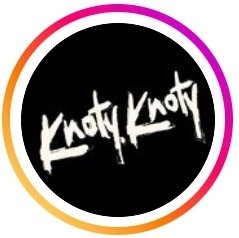The game of limbo doesn’t start with the pole on the floor. Rather, it starts with a few gratuitous inches to warm up before players begin back-bending attempts to evade the ever-lowering bar.
While a fun office icebreaker game or Cotillion tradition of yore, limbo is also a useful way to approach ESG efforts: one must start small and build momentum before upping the ante.
This is the approach that Fashion ReModel, led by the Ellen MacArthur Foundation and now financially supported by the H&M Foundation, has embraced. The Swedish retailer’s nonprofit arm endowed the demonstration project, which the charity championing circularity announced last May, with around $15.4 million (16.5 million Swedish krona) as the initiative works to decouple revenue from production and resource use.
Fashion ReModel invites brands of all backgrounds to scale up their circular practices—thus embracing recycling, rental, repair and resale—while curbing novel consumption. Ideally, the project’s participants will “identify solutions” and “unlock barriers” preventing the successful scaling of circular business models to begin the ultimate goal of removing revenue from the equation.
“We must decouple revenue from the production of new garments and the use of natural resources,” Christiane Dolva, head of innovation, research and demonstration at the H&M Foundation, said. “Embracing circular business models is essential—there’s simply no credible path to meeting global climate and biodiversity targets without transforming the way business is done.”
While circular business models are necessarily novel, they are newly lucrative.
The four horsemen (rental, repair, resale and remake) of retail represented a cool $73 billion market share as of 2019, per 2021-sourced data by the Ellen MacArthur Foundation. While driven mainly by resale, the sheer scale is indicative of just how much more money is on the table.
“Not only do circular business models have massive potential to become mainstream, they provide new and better growth for the fashion industry,” Marilyn Martinez, fashion initiative project manager at the Ellen MacArthur Foundation, said at the time. “Clothing production doubled between 2000 and 2015, while the time we use clothes fell by more than a third. Circular business models can help turn this around and create a thriving industry that takes a lead on tackling global challenges, such as climate change and biodiversity loss.”
Looking to tap into this potential, the first eight participants of the project—including labels like Reformation and Primark as well as the H&M Group’s Arket, Cos and Weekday brands—set goals to increase the amount of money made from circular efforts throughout the next three years, updating the Ellen MacArthur Foundation on an annual basis.
“There needs to be greater acceleration towards circularity in the fashion industry to move away from the traditional take-make-waste model,” Nick Lambert, Primark’s circular product lead, said last May upon joining the project. “We started small with our circularity ambitions but are working to scale this within our business so it can be truly embedded in the way we design and make our clothes in the future. Scaling circularity has taken some time, but we truly believe we can use our scale to help deliver real change for the industry and this partnership will allow us to push Primark further.”
Looking under the hood, the project’s framework is built upon standardized definitions and principles, as shaped by over 150 relevant players throughout the value chain as well as academics and innovators. Focused on “catalytic workstreams,” collaborators will test hypotheses while creating specific outputs on topics ranging from finance and climate to policy and marketing, per the foundations. A “technical reference group,” composed of supply chain savants and tech trailblazers, was formed to keep the initiative on topic.
“For a circular economy for fashion to become the norm, we must accelerate efforts that not only redesign the products of the future, but also the services and business models that deliver them and keep them in use,” Jules Lennon, fashion lead for the Ellen MacArthur Foundation, said. “We welcome business-led action toward a world where, instead of being worn once and discarded, clothes can be used many times—threaded through the lives of many people.”
If all goes (relatively) according to plan, circular business models could grow to 23 percent of the fashion market by 2030, per the Ellen MacArthur Foundation—representing a $700 billion opportunity. If the industry can reframe its existing make-take-waste to one of a more circular lineage, it could tackle the remaining 45 percent global emissions reduction target, the group believes.
Workstream insights from the project will be published annually, spotlighting both solutions found and struggles remaining. The Fashion ReModel has plans to expand by mid-2025, and the Ellen MacArthur Foundation will publish a more holistic report highlighting the group’s progress in 2028.
